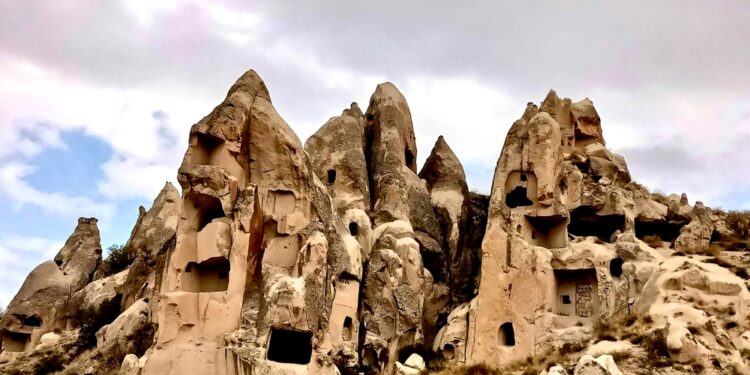Nestled in the heart of Turkey lies a mesmerizing landscape unlike any other on Earth. The region of Cappadocia, a breathtaking geological wonder, is home to the enchanting Fairy Chimneys – unique rock formations that have not only captivated tourists and locals alike but also stand as a testament to the remarkable forces of nature and human ingenuity.
Created over millions of years by the slow, relentless forces of erosion, these striking formations have been sculpted from the volcanic tuff deposited during ancient eruptions. As rainwater and wind gradually wore away the soft rock, these impressive structures began to take shape. Each Fairy Chimney is a masterpiece, a combination of the natural and the man-made, as some have been carved into homes, churches, and even entire underground cities.
To truly appreciate the beauty and significance of these geological marvels, we must delve into their origins, understand the forces that shaped them, and explore the rich history of human habitation that has unfolded within their walls.
The Formation of the Fairy Chimneys
The story of the Fairy Chimneys begins around 60 million years ago when the region now known as Cappadocia was covered by a series of volcanic eruptions. These eruptions spewed layers of ash, lava, and other volcanic materials, which eventually solidified to form a soft, porous rock known as tuff.
Over the eons, the tuff was exposed to the elements, and the relentless forces of erosion gradually sculpted the landscape. In Cappadocia, two primary agents of erosion – rainwater and wind – combined to carve the Fairy Chimneys into the unique shapes we see today. As rainwater seeped into cracks and fissures in the rock, it slowly wore away the softer tuff, leaving behind the harder, more resistant rock layers. Meanwhile, the wind played its part, whisking away loose particles of rock and shaping the Fairy Chimneys’ distinctive contours.
The result of these erosional processes is a surreal landscape of towering spires, sinuous valleys, and hidden caves, each with its unique shape and character. Some of the most famous Fairy Chimneys can be found in the Göreme Valley, where the whimsical formations have been nicknamed “mushroom rocks” and “camel rocks” due to their striking resemblances to these natural and animal forms.
Human Habitation in the Fairy Chimneys
While the Fairy Chimneys themselves are a testament to the awesome power of nature, it is the human story interwoven with these geological wonders that truly sets them apart. For thousands of years, the people of Cappadocia have taken advantage of the soft, easily carved tuff to create homes, churches, and even entire underground cities within the walls of the Fairy Chimneys.
The region’s unique geology offered an ideal environment for early human settlements. The soft tuff was easily excavated and manipulated, allowing communities to carve out living spaces, storerooms, and religious sanctuaries. This natural insulation provided by the rock formations helped to maintain a comfortable interior temperature, protecting inhabitants from the harsh Anatolian climate.
One of the most remarkable examples of human habitation in the Fairy Chimneys is the Göreme Open Air Museum, a UNESCO World Heritage site. Here, visitors can explore a network of chapels, monasteries, and living quarters dating back to the 4th century. Many of the structures are adorned with intricate frescoes depicting scenes from the Bible, providing invaluable insights into the religious and artistic traditions of the time.
Another fascinating example is the underground city of Derinkuyu, which is believed to have been used by early Christians as a refuge from persecution. This subterranean marvel could accommodate up to 20,000 people along with their livestock and food stores. It had ventilation shafts, wells for water, and even complex security features like stone doors that could be rolled across passage ways to seal off the city in times of danger. These cities weren’t just functional but are also testimony to the remarkable adaptability and resilience of human beings in the face of challenging conditions.
In conclusion, the Fairy Chimneys of Cappadocia offer a fascinating glimpse into the powerful interplay of natural forces and human ingenuity. From their formation through volcanic eruptions and the slow, steady work of erosion, to their use as dwellings, places of worship, and refuges, these remarkable formations bear witness to millions of years of geological and human history.
Today, the Fairy Chimneys continue to captivate and inspire, attracting visitors from around the world who come to marvel at their otherworldly beauty and explore the rich history etched into their walls. They stand as a testament to the enduring allure of Cappadocia, a place where nature’s whimsy and human tenacity have combined to create one of the world’s truly unique landscapes.







